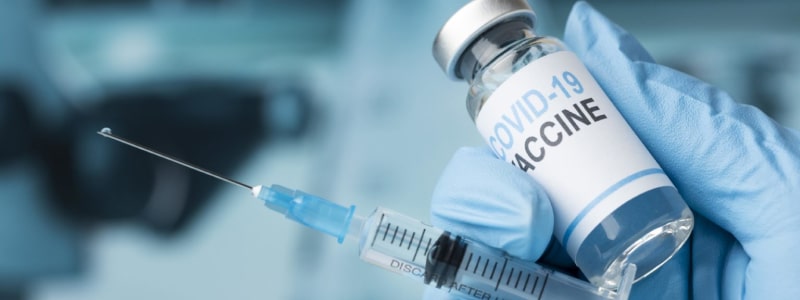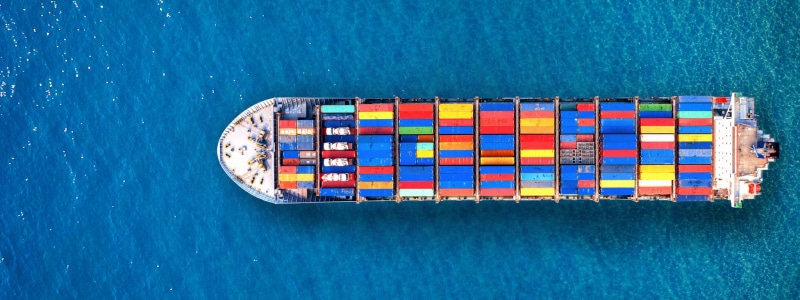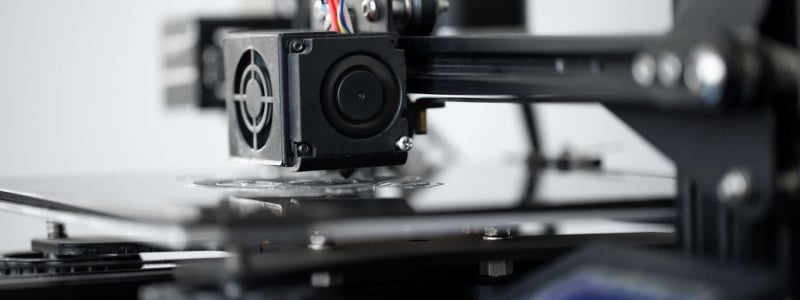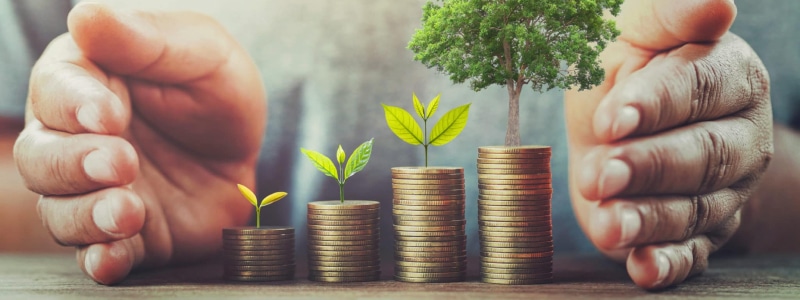Quick links
- 10 Game Changers for a Cleaner, Fairer World
- 1. “Green” steel and CO2-enriched concrete
- 2. COVID vaccine factory-in-a-box
- 3. Eliminating food waste and feeding the hungry
- 4. A bio-materials revolution
- 5. Eliminating supply chain blind spots & helping small business
- 6. Cleaner ocean shipping
- 7. On the road
- 8. Shortening supply chains
- 9. The grid
- 10. Chance to make a difference
The past two years have delivered a steady stream of bad news about our fragile planet, income inequality, vaccine inequity and a host of other problems that seem intractable.
The daily doom and gloom about climate change, job losses and lack of access to COVID vaccines feeds our sense of anxiety, vulnerability and helplessness. I think it also clouds our ability to see that we are living in an era of breathtaking human innovation and heroic problem solving.
A few potential game changers that have caught my eye:
1. “Green” steel and CO2-enriched concrete
Several companies, including H2 Green Steel and Hybrit of Sweden, have begun using hydrogen and non-fossil fuels to produce “green” steel. That’s important because steel is one of the world’s most widely used materials, essential in construction, fabrication and consumer goods, and is normally made through a carbon-heavy coking process that uses coal. In conventional steelmaking, nearly two tons of CO2 are emitted for every ton of steel produced. That’s about 7% of global greenhouse emissions.
People tend to think of hydrogen as an answer for transportation emissions, says Sunfire CEO Nils Aldag. Instead, it might be a better power source for “hard-to-abate” sectors like the chemical and steel industries, he says.
Production of concrete and cement is just as concerning. Depending on how it’s measured, concrete production is responsible for 4% to 8% of man-made carbon emissions – more than any country except for China and the U.S. on an annual basis. To make concrete you need stone and sand, then cement to bind it by adding water. To make cement, you need to kiln-fire a mix of materials in a dirty process that releases a lot of CO2.
But it turns out that CO2, captured from industrial processes, can be injected into concrete during the curing process to strengthen it. Canada’s Carbicrete and the U.S. company Solidia are doing just that. Zero-carbon concrete is coming — the question is when, experts say.
2. COVID vaccine factory-in-a-box

BioNTech partnered with Pfizer to develop and scale the West’s first COVID-19 vaccine. Now BioNTech says it can solve the worrisome problem of scarce vaccine supplies in Africa with mobile, modular production units that could each manufacture up to 50 million doses a year.
Individual vaccine production units are comprised of 12 shipping containers, which can be moved by air, sea, road or rail and can also be used to make vaccines to ward off malaria, tuberculosis and other diseases. Even more impressive: BioNTech pledges to cover the cost of development, manufacturing and shipment.
3. Eliminating food waste and feeding the hungry
By some estimates, up to 40% of food in the United States is thrown out. And in Africa, half or more of perishable food commodities go bad before they reach the market or table. What’s more, food waste contributes about 8% of global greenhouse gas emissions.
Goodr, a startup company, has developed software that tracks surplus food, helps customers such as restaurants, airports, schools, hospitals and grocers cut down on the amount they waste and donate what might otherwise go in the garbage. Goodr automatically generates tax donation receipts so customers can write off what they give away.
4. A bio-materials revolution
Consumers want more sustainable products, and regulators are mandating lower emissions. So product makers are turning to DNA sequencing, gene editing and AI to make bio-materials and processes that can substitute for plastics, foams, synthetic fabrics, elastomers and other materials made from petrochemicals and processing chemicals.
With automation and high-powered computing, they are able to effectively “engineer” biology and produce physical materials that perform better and are more sustainable. The result is a coming bio-materials revolution that will change what goes into our clothes, cars, electronics and consumer goods, as well as the packaging they come in. We’ve already seen the first wave in lab-grown meat, plant-based clothing, plastic substitutes, and fabrics made through fermentation.
5. Eliminating supply chain blind spots & helping small business
Sourcemap promises shippers something they haven’t yet found: 100% traceable, transparent supply chains. Its software helps companies create end-to-end mapping for due diligence, customs compliance, environmental and social sustainability, business continuity, operations planning and other uses.
“Identify the suppliers you didn’t know you had,” Sourcemap tells customers.
SME Climate Hub gives small businesses carbon calculation tools to help them measure, lower and report emissions. The tools allow smaller businesses to take climate action and meet the growing demands from customers and consumers for data, reporting and progress on CO2 emissions.
SME360, backed by the International Chamber of Commerce, is another initiative that gives smaller businesses the tools they need to measure and track their impact on the environment.
6. Cleaner ocean shipping

The Yara Birkeland, the world’s first autonomous, emissions-free containership, made its maiden voyage in late 2021. The battery-powered ship will be used to transport fertilizer in Norway, handling loads now made with 40,000 diesel-truck trips each year.
The ocean industry is also looking at methanol and ammonia, two cleaner-burning fuels that are expensive to make and hard to obtain in sufficient quantities. Maersk, the world’s largest ocean carrier, says it is working with partners in Denmark to scale production of methanol, a carbon-neutral fuel, starting in 2023. Maersk has ordered 12 methanol-powered liners, at a cost of $175 million a ship, that can each carry 16,000 TEUs.
On the software side, Searoutes is one of many companies helping shippers build custom routing algorithms and data sets to lower shipping emissions.
7. On the road
Lithium batteries are the key to electrification of cars and trucks, but they pose their own problems. One concern is that there is a limited known supply of lithium, concentrated mainly in Australia, Chile and China. Warren Buffett’s Berkshire Hathaway is among those looking for lithium in new places. It has discovered vast deposits in a California lakebed.
A related problem is the lack of charging infrastructure for electrified vehicles. Daimler, Black Rock and NextEra have joined to build a nationwide charging network in the United States for medium- and heavy-duty battery electric vehicles and hydrogen fuel cell vehicles.
Companies like Hyliion, a U.S. company developing low-emission and zero-emission power train systems for heavy trucks, have drawn a lot of attention from investors and the general public. Less noticed have been innovations in niche transportation areas. Frigoblock and Thermo King, for example, have pioneered emissions-lowering electric systems for refrigerated trucks that are used to ship perishable foods, medicines and other cold chain products. Now, they are working to make those vehicles noiseless so that they can be used for off-hours deliveries in congested urban areas. Volta Trucks is another company pioneering sustainable urban trucking.
8. Shortening supply chains

3D printing or additive manufacturing has been a tantalizing – but extremely limited — technology since it was first developed in the 1980s. Beyond certain specialized uses, it’s been hard to scale or to use for high-end products with lots of components.
Seurat Technologies has figured out a way to speed up and scale 3D manufacturing and use it to make sophisticated products and parts containing metal. Seurat’s breakthrough involves a technique that splits a laser into many beams that are programmed to do their own printing.
One of the benefits of 3D printing is that it shortens supply chains by moving production closer to end users and eliminating the need to transport goods long distances.
9. The grid
The clean power conundrum is really three problems: generation, transmission and distribution. Renewables such as wind and solar, along with cleaner-burning fossil fuels, offer an answer as to how we will generate power with little or no emissions. But there can be no net-zero power grid without long-duration energy storage (LDES) that addresses the problems inherent in trying to store energy while making transmission and distribution cleaner and reliable.
The problem of long-term storage for the grid has spawned an industry devoted to using new and existing technologies – mechanical, thermal, electrochemical and chemical – to store energy from different sources and release it efficiently to correspond with demand.
10. Chance to make a difference

Individual investors suddenly have lots of options to channel their retirement savings and other funds into responsible investments that are tailored to their interests.
Socially responsible investing is not new, but the variety of options is large and growing. One example: the thematic investments offered by Fidelity. They include funds comprised of companies that are developing disruptive technologies; built to capitalize on megatrends; or structured with sustainable practices, diversity and strong governance. Some of the thematic fund sectors: digital health, electric vehicles, cloud computing, and clean energy.
My point is that the momentum behind serious global problem solving is undeniable. And it is making a difference.
McKinsey says capital is “increasingly plentiful” for next-generation technologies and estimates that they could attract $1.5 trillion to $2 trillion in fresh investment annually by 2025. One indication is the creation of the First Movers Coalition, a group of global companies that includes Agility, which is pledging to help build early market demand for low-carbon goods and services.
It will take all of this and more to make our world cleaner, fairer, safer and more just. Let’s not get so caught up in the gloomy headlines that we lose heart, or fail to recognize that we’re making progress.

